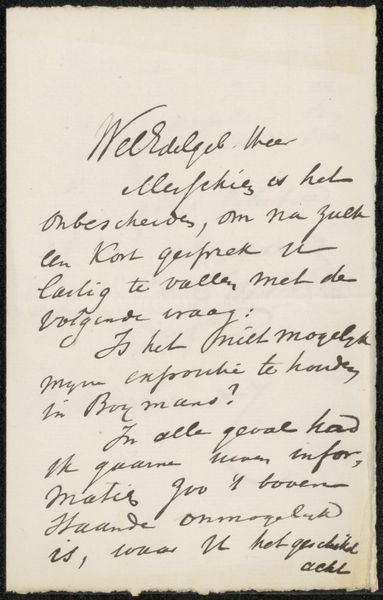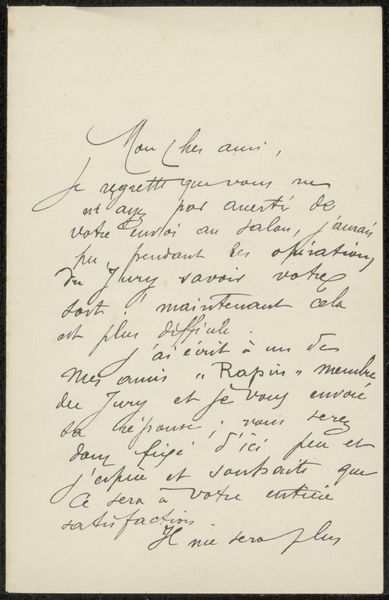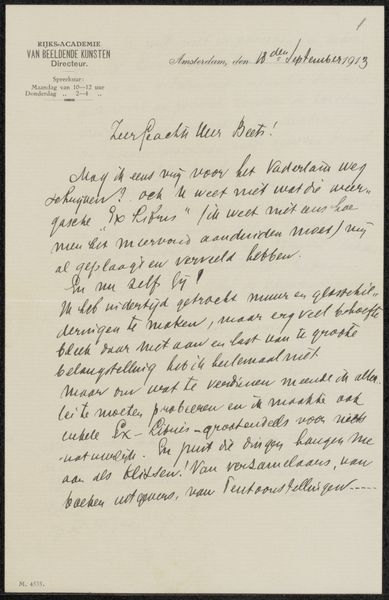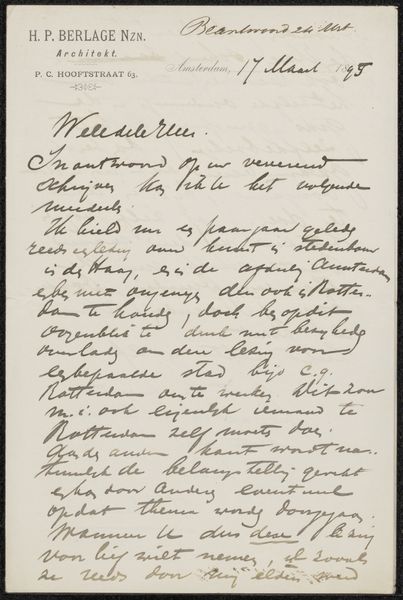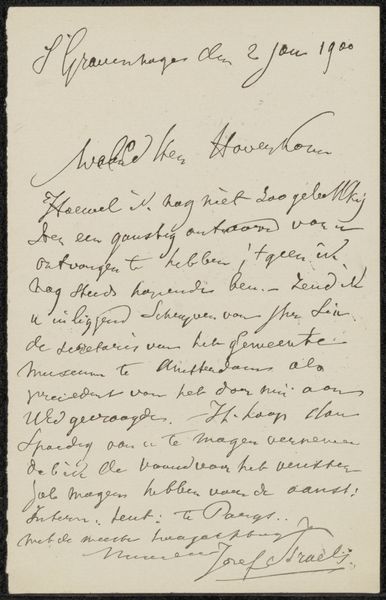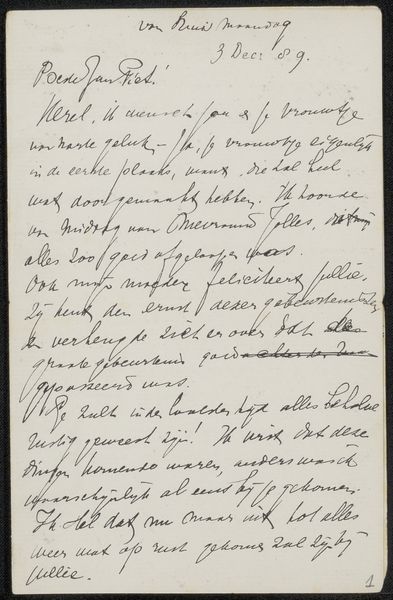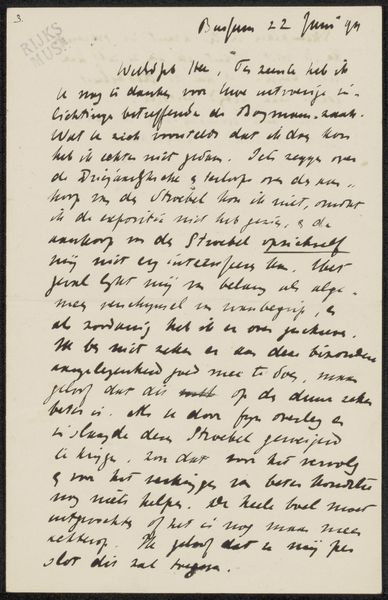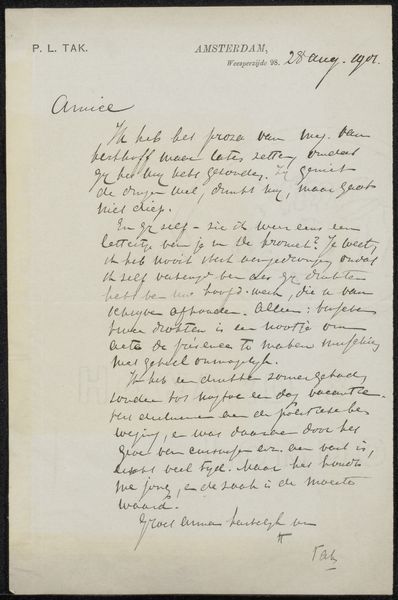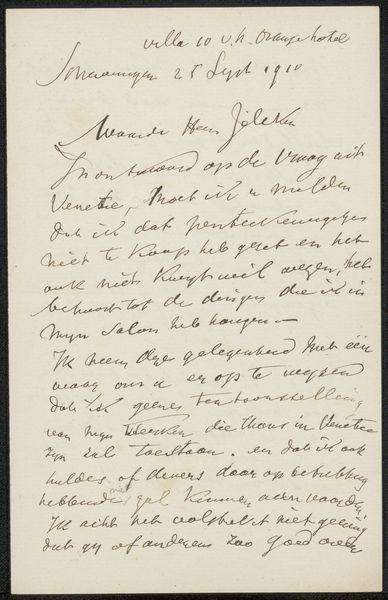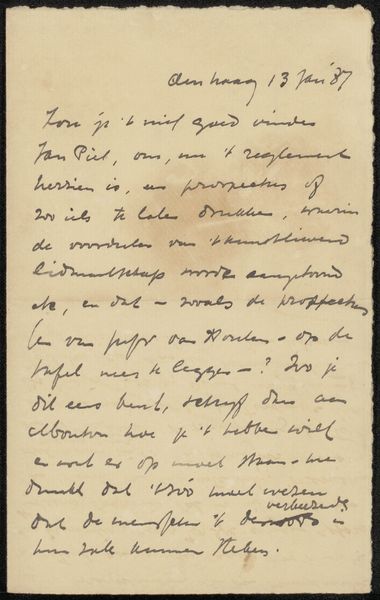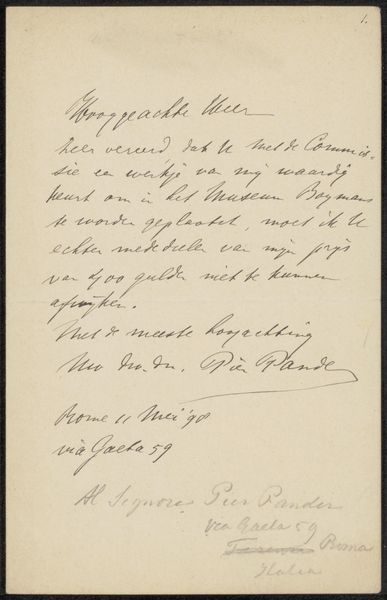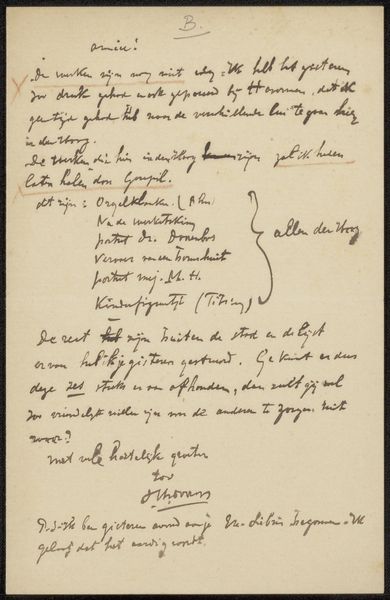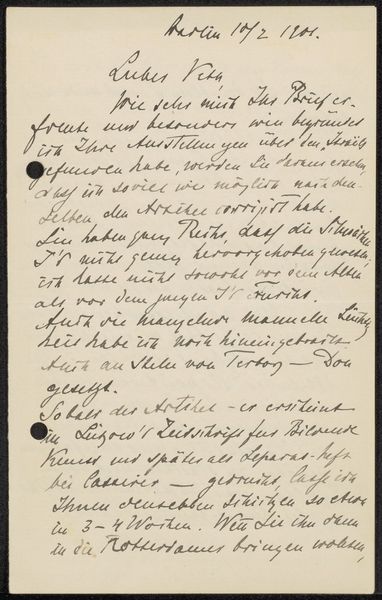
drawing, paper, ink, pen
#
drawing
#
hand-lettering
#
hand lettering
#
paper
#
ink
#
pen
#
calligraphy
Copyright: Rijks Museum: Open Domain
Curator: Ah, this script looks so full of urgency! Is it just me, or does it seem imbued with this anxious energy, pressing across the page? It feels like whatever message is captured here couldn’t wait to be put down. Editor: Well, you're not entirely wrong. This intriguing piece is titled "Brief aan Philip Zilcken" which translates to "Letter to Philip Zilcken". It's potentially from between 1921 and 1928 and crafted with pen and ink on paper by Otto Johan Willem Carel graaf van Bylandt. The letter itself, of course, is a symbolic form, but then look at this handwriting; it feels like calligraphy but stripped down to its bare essence. Curator: Stripped down calligraphy! I love that! The looping ascenders and descenders are stretched out and elongated. What secrets are concealed within that elegant script? Also, a "letter"? A traditional and somewhat personal means of connecting. In the age of instantaneous digital communication, the weight of an old handwritten letter feels almost like bearing witness to an intimate historical act. What language is it? It looks...Dutch? Editor: Indeed, it's Dutch. Letters function as little time capsules of language and intent. Van Bylandt seems to use handwriting that feels simultaneously personal and somehow timeless. It carries a particular weight of intimacy that speaks volumes, doesn't it? Like reading someone's diary! The ink, the paper...everything has history embedded in it. Curator: Absolutely, and the imperfections—the smudges, the uneven pressure, contribute so much to the artwork's personality, wouldn't you say? All of those signs carry meaning, which gives the symbols so much more force. In this day and age, it’s these textures of imperfection and unique form that reveal character. Editor: Yes, exactly. The imperfections highlight the beauty of handmade creation and reveal our vulnerability to the passage of time, transforming each artifact into an archeological site rich with symbols, emotion, and history. So... next?
Comments
No comments
Be the first to comment and join the conversation on the ultimate creative platform.
